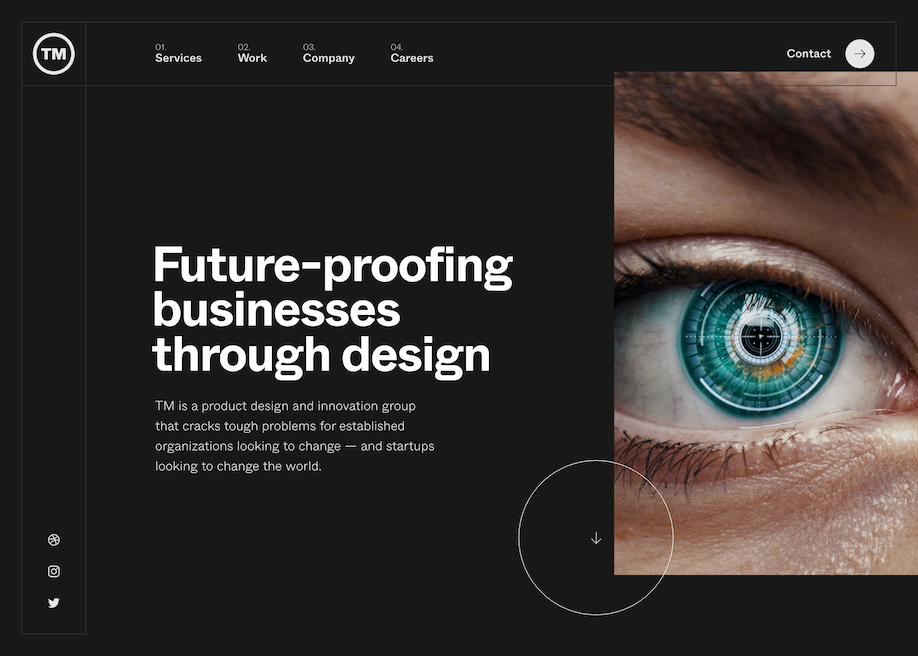How Effective Web Layout Can Increase User Experience and Conversions
In the progressively affordable digital landscape, reliable web style plays an essential function in boosting individual experience and driving conversions. By concentrating on user-centric concepts, such as clear web content power structures and user-friendly navigation, businesses can create engaging platforms that not only draw in visitors but additionally assist in smooth communications. As we check out the crucial elements that contribute to successful website design, it becomes obvious that the impact on customer complete satisfaction and conversion rates is profound. Recognizing these characteristics might discover methods that might transform exactly how individuals involve with your site.
Significance of User-Centric Design
In the realm of web style, focusing on user-centric design is critical for developing efficient digital experiences. This strategy concentrates on recognizing the needs, choices, and habits of individuals, ensuring that electronic user interfaces are available and intuitive (Web design). By integrating individual feedback right into the design procedure, web designers can craft experiences that reverberate with their target market, eventually bring about boosted involvement and contentment
User-centric design highlights functionality, which is important for lessening and maintaining users bounce prices. When individuals can navigate a site easily, they are extra likely to explore its content and exchange consumers. A user-centered strategy promotes trust and trustworthiness, as individuals feel that their requirements are valued and dealt with. This not only boosts their experience but also urges brand name loyalty.

Crucial Element of Effective Design
Efficient format works as the foundation of user-centric website design, translating customer requires into visual frameworks that promote communication. A well-organized design focuses on content with a clear pecking order, guiding users' eyes to necessary info. This pecking order is often developed making use of spacing, color, and size, guaranteeing that essential elements attract attention.
One more crucial element is the usage of whitespace, which prevents congestion and enhances readability. Web design. Whitespace enables aspects to take a breath, making the overall layout show up cleaner and easier to navigate. In addition, consistency in style aspects, such as colors and font styles, promotes experience and count on, enabling individuals to browse the website with better ease
Grid systems can likewise be invaluable, giving a structure that straightens material realistically and visually. This placement improves the individual experience by creating an organized visual flow. Versatility in layout-- like receptive layout-- ensures that internet sites carry out well across different tools, catering to varied user choices.
Eventually, a reliable design not only mesmerizes customers but also encourages them to engage even more deeply, ultimately fulfilling and driving conversions business goals. By concentrating on these crucial elements, designers can develop designs that resonate with users and boost their total experience.
Navigational Ideal Practices
Clear and user-friendly navigating is essential for enhancing user experience on a web site. A well-structured navigation system allows individuals to find details swiftly, which directly influences their contentment and likelihood of conversion - Web design. Implementing a hierarchical framework is important; utilize classifications and subcategories that practically team relevant material, making it less complicated for site visitors to discover
Ensure that switches, web links, and menus preserve uniformity in design, shade, and placement across all web pages, giving users with a familiar structure as they navigate. Rather of generic terms, opt for clear tags that precisely mirror the material, assisting users in making educated choices.

Mobile Responsiveness and Access

Accessibility, on the various other hand, concentrates on making internet sites functional for people with handicaps. This includes sticking to guidelines such as the Web Content Accessibility Guidelines (WCAG), which address issues like shade contrast, text size, and keyboard navigating. By carrying out these standards, internet developers can create comprehensive experiences that deal with a wider target market, thereby improving user engagement and complete satisfaction.
Moreover, mobile responsiveness and ease of access not only boost customer experience however likewise positively impact internet search engine positions. Internet search engine focus on accessible and mobile-friendly websites, making them more probable to appear in pertinent search results. Subsequently, buying these elements of website design not just satisfies user needs yet also adds to total service success through raised exposure and improved conversion prices.
Gauging Success Through Analytics
Tracking customer communications and actions through analytics is necessary for assessing the success of an internet site. By leveraging devices such as Google Analytics, services Your Domain Name can gather essential data that reveals exactly how users engage with their site. Metrics such as bounce rates, typical session period, and conversion prices supply insights into user actions and can highlight locations for enhancement.
Comprehending individual demographics and web traffic sources additionally improves a site's performance. This data enables web developers to tailor web content and design components to much better meet the needs of their target market. Additionally, tracking particular individual trips helps determine prospective bottlenecks in the conversion funnel, allowing companies to enhance their website design as necessary.
A/B testing different design components can provide concrete evidence of what resonates with users, allowing for informed decisions based on real-world performance. Ultimately, gauging success through analytics not only enhances individual experience but likewise drives conversions, ensuring that internet design efforts align with organization purposes.
Verdict
To conclude, effective website design plays a pivotal role in improving customer experience and driving conversions. By focusing on user-centric concepts, executing crucial design aspects, and making certain intuitive navigating, web sites can engage a diverse audience. Mobile responsiveness and access further add to a seamless interaction for all users. Ultimately, gauging success through analytics allows for continuous renovation, ensuring that design approaches remain lined up with user needs, therefore cultivating company development and success.
In the increasingly competitive digital landscape, effective web design plays a critical duty in improving customer experience and driving conversions. By integrating user responses into the design procedure, web designers can craft experiences that reverberate with their target audience, inevitably leading to enhanced involvement and satisfaction.
Eventually, the significance of user-centric layout lies in its ability to develop meaningful communications that drive conversions and foster lasting partnerships with users, making it an indispensable component of effective internet layout strategies.
Eventually, determining success via analytics not only improves user experience yet also drives conversions, guaranteeing that web design efforts line up with organization goals.In final thought, reliable web design plays a crucial function in enhancing user experience and driving conversions.